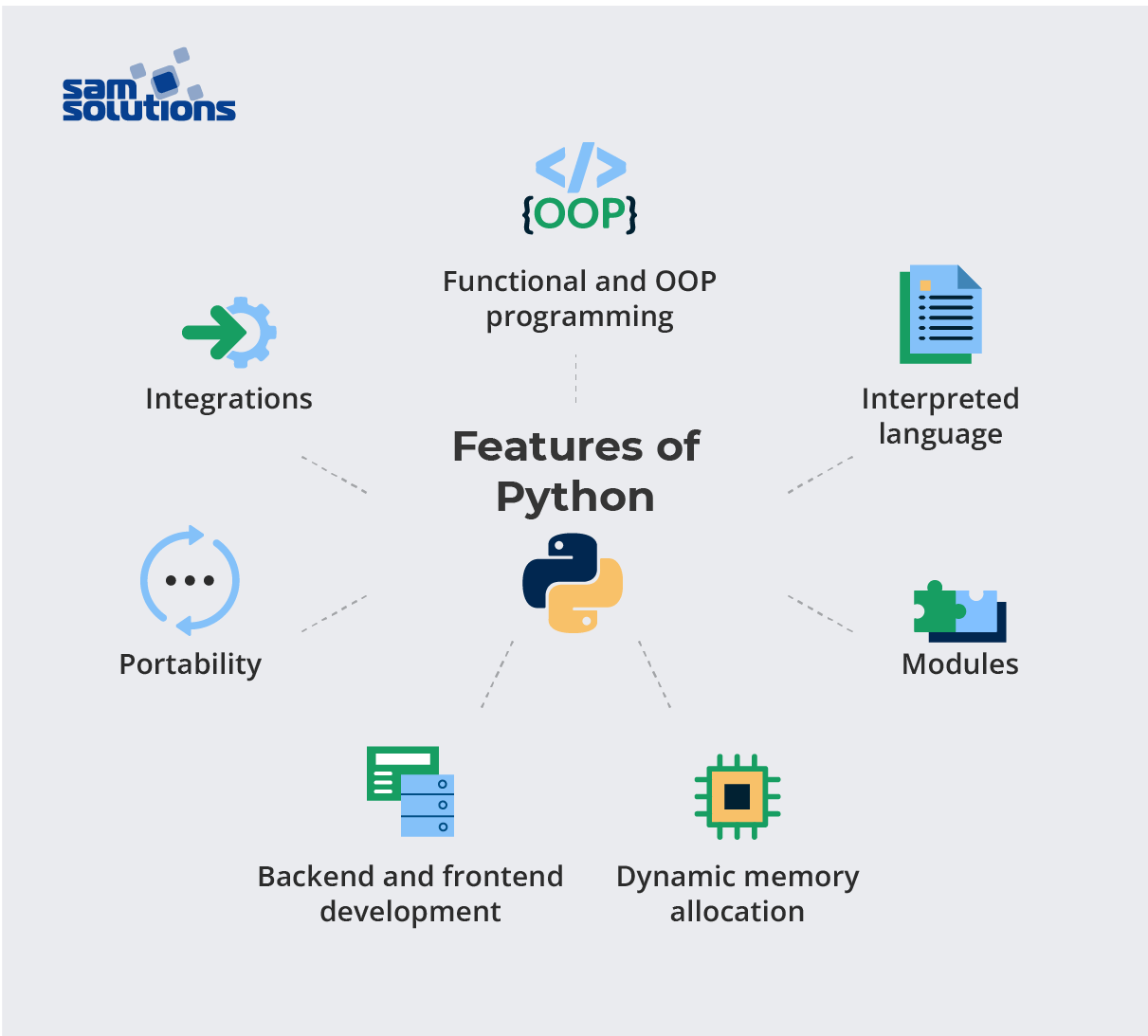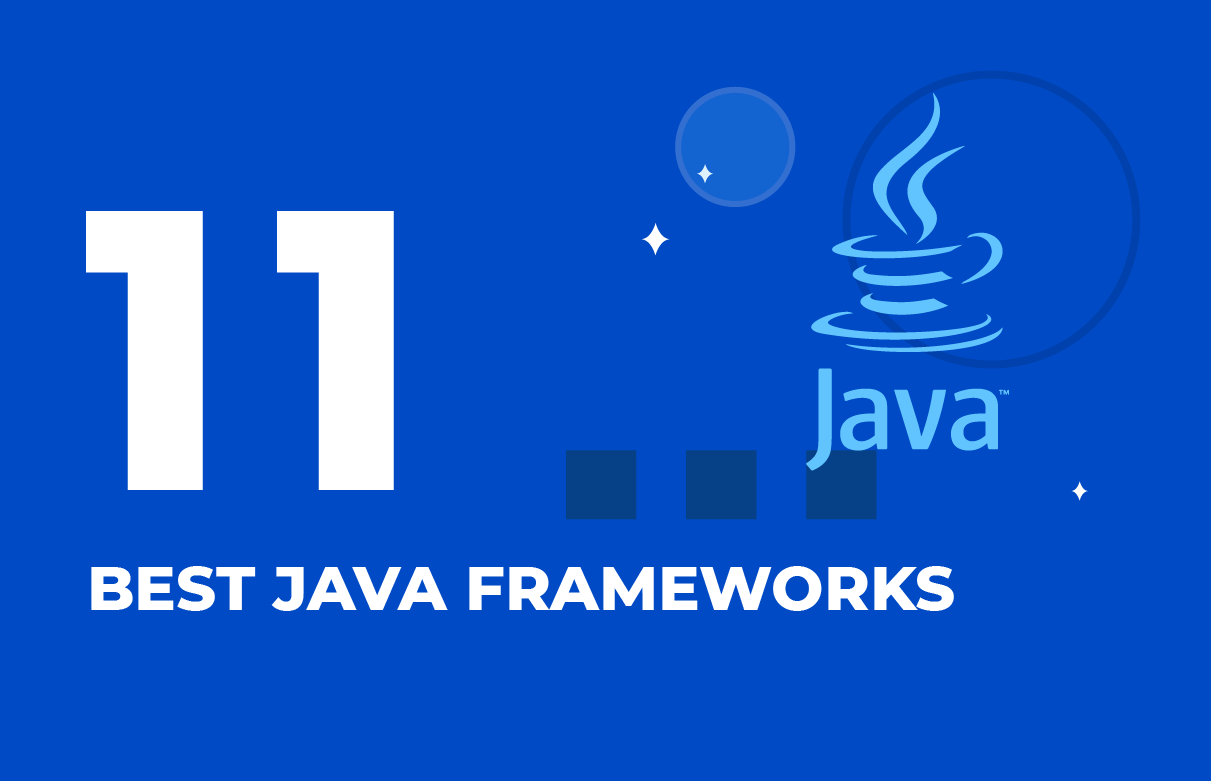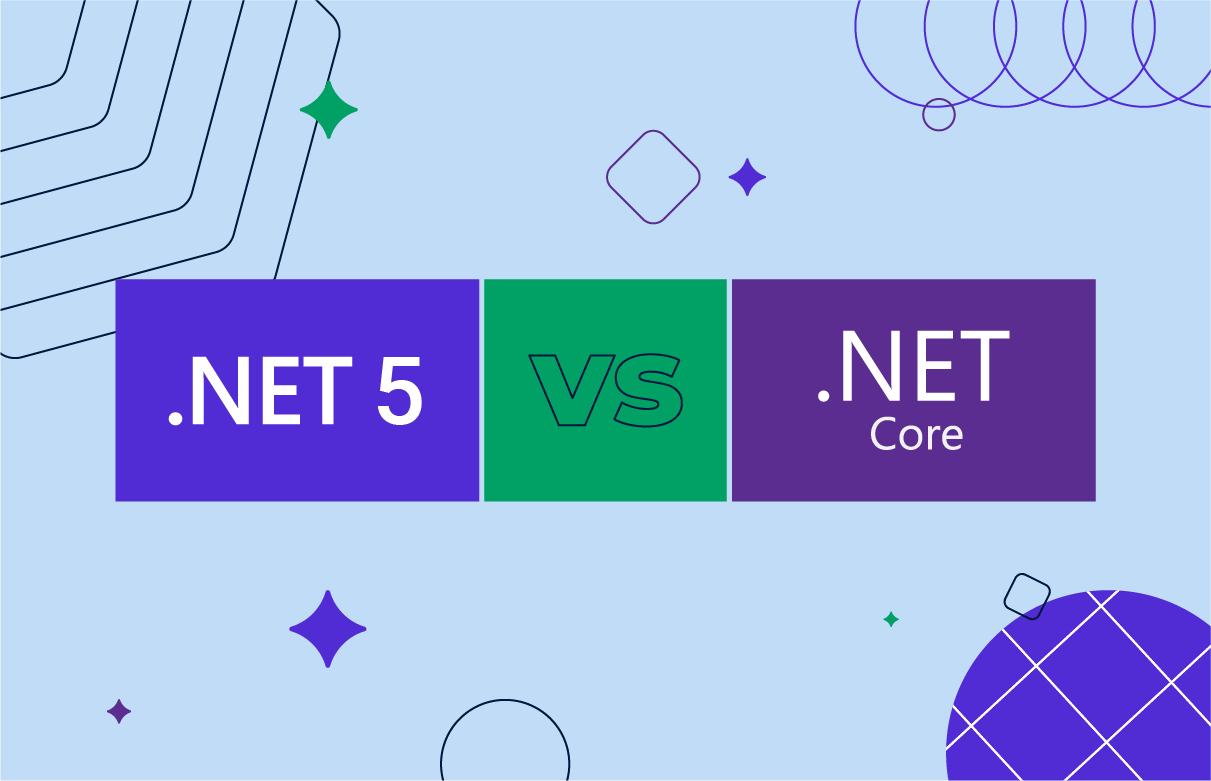We continue our series of articles on popular programming languages, technologies, and tools currently used by software developers. The goal of this article is to compare Node.js and Python, the most widely used tools for the backend development of web applications. We will analyze the prominent features of both Python and NodeJS, look at the challenges of working with both tools, and compile a comparison table to better understand the differences and similarities between them.
Develop your custom software with SaM Solutions’ engineers, skilled in the latest tech and well-versed in multiple industries.
What Is Node.js?
The inventor of Node.js is Ryan Dahl, who in 2009 implemented the idea of simultaneous processing of multiple requests in this tool. In essence, Node.js is a JavaScript runtime written on V8 Engine by Google and widely used for backend development.
Today, NodeJS is the largest free and open-source runtime environment aiming at various platforms, used to create a wide range of server-side solutions, including IoT, social media and real-time apps.
What Is Python?
Python is an open-source, universal, high-level programming language, running on Google App Engine. Its distinctive advantages are well-structured, easy-to-read code and high performance of software solutions.
The development of Python began in the second half of the 1980s, and it was officially announced in 1991 by Dutch programmer Guido van Rossum.
Python’s syntax is incredibly lightweight, which allows you to learn how to use it in a relatively short time. The kernel of Python has a very convenient structure, and a wide range of built-in libraries allows you to use an impressive set of useful functions and features. Python is used to write various types of applications, as well as develop web services.
Features of Node.js
The following is a list of features that most clearly characterize NodeJS.

- JavaScript — the programming language around which Node.js is built. JavaScript is multi-paradigm and supports various programming styles, including object-oriented (OOP), imperative, and functional programming.
- Event-driven I/O model — servers based on Node.js work according to the non-blocking principle and all APIs are asynchronous. This means that when you make a call, the server gets a request and registers an event, but doesn’t wait for the data to be returned; instead, it moves to the next request, and the previous one is called as soon as fetching is done. The essence of this Node.js model is that the following requests are not blocked by the previous ones. This makes NodeJS a great choice for building real-time apps with push notifications.
- Single-threaded architecture — NodeJS uses the event loop, thanks to which the JavaScript code runs on a single thread. This means the event loop executes one instruction at a time. All the requests are queued up depending on the time they arrive, and the system processes them one by one. This may seem like a disadvantage of Node.js, but in practice it’s not: since different requests take different amounts of time to be executed, the event loop triggers them one by one; but if a request needs more time and uses non-blocking operations to get data, the system doesn’t wait until it’s done to switch to the following request. This way, the thread in Node.js is not blocked and users get fast responses.
- V8 Engine — the driving force behind NodeJS is Google’s V8 engine, created for the Chrome browser. This is a virtual machine written in C++ that has built-in compilers, optimizers, and an interpreter to transform JavaScript into machine code. The engine ensures the high speed and advanced performance of Node.js web apps.
- NPM (Node Package Manager) — a package management system for automatic installation and updating of packages. NPM is installed with Node.js by default. The speed of creating Node.js apps when using packages increases significantly, since developers can add other JavaScript libraries and frameworks, abstract from routine operations and iterate code faster.
- Cross-platform development — you can develop desktop applications for Windows, macOS and Linux using Node.js accompanied by frameworks such as Electron or NW.js. This way, the written code for web apps can be reused for desktop versions, which significantly saves resources and reduces development costs.
Features of Python
Now, let’s discuss the distinguishing features of Python.

- Functional and OOP programming — Python, as well as JavaScript, can support a wide range of application development styles, including OOP, which supports classes, objects, inheritance, polymorphisms, encapsulation, etc., and functional programming, which is based on the use of functions.
- Interpreted language — Python uses an interpreter to execute code line by line (in contrast to compiled languages that use a compiler, which executes the entire code at a time). Thanks to this feature, Python is more convenient to debug, because error messages are shown one by one and can therefore be easily fixed.
- Modules — Python supports modularity, which means you can reuse code by dividing it into manageable modules. Python offers a variety of built-in modules, and also allows developers to create their own user-defined modules.
- Dynamic memory allocation — in Python web applications, memory for variables is allocated automatically at runtime (i.e., at the time of execution). This approach is more efficient compared to static memory allocation.
- Backend and frontend development — the key use cases of Python are backend development projects using popular Python frameworks such as Flask and Django. However, you can also apply Python to frontend development with the help of the PyScript framework. Another option is Pyjs (aka Pyjamas), which contains a Python-to-JavaScript compiler and allows you to write client-side web and desktop apps entirely in Python without having to use HTML and JavaScript code.
Note! Frontend development with Python is not a popular approach, since it has many limitations and isn’t suitable for projects with complex UI.
- Portability — Python is designed to be portable — i.e., it can run on any modern operating system (Linux, macOS, Windows).
- Integrations — Python can integrate with other programming languages and technologies, including Java, Go, Rust, C++, CORBA. In addition, it ensures native support for C, because Python’s interpreter is written in C.
Challenges with Node.js
Despite all the benefits and powerful features that Node.js provides, it also presents certain issues during the development process.
- No clear guidelines — the technology stack of NodeJS is highly extensive, but there are no clearly defined guidelines on how to develop applications. This is a significant obstacle, especially for newbies. Since there is no consistency across various Node.js tools, programmers should organize individual processes for app development and maintenance, which requires a lot of effort and experience.
- Problematic scalability — since the architecture of Node.js is single-threaded, it’s a more complicated task to scale up projects. So if you need a scalable application based on Node.js, make sure you create a microservice architecture for it.
- Technical debt — the Node.js user community has accumulated significant tech debt around the technology. On the one hand, the open-source platform is actively developed through the efforts of thousands of enthusiasts; on the other hand, they may create incomplete pieces of functionality that require further improvement but remain intact. The Node.js ecosystem is filled in with such “duct tapes”, resulting in lots of inconsistencies when building and maintaining apps.
Challenges with Python
Working with Python can also present some pain points.
- Slow speed — since Python is an interpreted language, its code is executed line by line, so the execution at runtime is slower.
- High memory consumption — the flexibility of data types in Python results in more memory required for handling processes. Consequently, if you write a large software system with memory-intensive tasks in Python, it will consume significant memory resources, which may not be affordable for some solutions.
- No built-in mobile capabilities — Python is not the best choice for developing mobile apps because it has no default features for mobile development. However, there are libraries such as Kivy and Beeware, which you can use to create mobile solutions with Python.
Differences between Node.js and Python
Now let’s compare Node.js and Python point by point, covering the main aspects of the two technologies, and discover their differences and similarities.
The Node.js vs Python comparative table
| Node.js | Python | |
| Technology essence | runtime environment | programming language |
| Architecture | event-driven | not event-driven |
| Speed and performance | faster | slower |
| Syntax | JavaScript | simple and concise |
| Scalability | easily scalable | not easily scalable |
| Additional tools | integrates with tools, libraries and frameworks | integrates with other languages, tools, libraries and frameworks |
| Community | large | large |
| Learning curve | low | low |
| Use cases |
|
|
Technology essence
Evidently, the key difference between Node.js and Python is that Node.js is a runtime environment, while Python is a programming language.
Architecture
The NodeJS architecture is based on a single-threaded event loop model, which means it can handle multiple asynchronous events and the thread is not blocked.
Using both Python and Node.js, you can build various types of architecture patterns, including event-driven architecture and clean/hexagonal architecture, but you can’t do that by default. The difference is that you will have to install additional libraries and tools (e.g., asyncio), if you wish to develop asynchronous code in Python.
Speed and performance
NodeJS ensures exceptional app performance and speed thanks to several factors:
- V8 JavaScript engine, which makes any application based on Node.js work faster
- Resource-efficiency, which is achieved by code execution outside the web browser
- Event-driven architecture, which doesn’t block requests and speeds up code execution
The performance of Python-based programs is slower because the language is interpreted and requests are processed in a single flow.
Syntax
Node.js has JavaScript syntax, which is quite easy to grasp. However, since NodeJS is an open-source platform, its ecosystem comprises a bunch of various functions and modules, and not all of them are perfect. To master NodeJS, developers should be experienced in JavaScript and have a good command of a high-level language (such as C++ or Java).
In contrast, Python’s syntax is extremely simple, clear and concise. You write fewer lines of code without curly brackets than you would with JavaScript on the Node.js platform. So, Python wins against NodeJS in terms of syntax simplicity and readability.
Scalability
Node.js is a good choice for scalable projects. Using this platform, you can build apps based on microservices; consequently, you can add new functionality seamlessly, without compromising the entire app performance.
In terms of scalability, Python loses to NodeJS because it doesn’t support multithreading. If you scale up a project based on Python, it will eventually become too complex to be maintained properly.
Additional tools
There are no issues with Node.js customization and extensibility. You can integrate it with tools for testing, data migration, project monitoring, process management, as well as third-party frameworks such as Restify and Express. There is also a wide choice of libraries for Node.js that can add value to the functionality of an app.
Python is an integrated language, so it can cooperate with other languages (C++, Java) as well as code editors, libraries and frameworks. Among the most popular Python libraries are TensorFlow, PyTorch and Pandas. The given integration opportunities provide access to a variety of functionalities that business owners may want to add to their applications in order to deliver improved experience to customers. In particular, they help with data analysis and other machine learning tasks.
Community
Both NodeJS and Python have an active community comprising millions of developers and contributors. Given that JavaScript is the most popular programming language and Node.js is based on JavaScript, it has a fast-growing community.
Learning curve
In general, both NodeJS and Python have a low learning curve. But as they say, tastes differ, and this can be a subjective opinion. How fast you learn any technology depends on individual preferences and technical background.
If you are familiar with JavaScript, you will have no trouble learning Node.js. The installation process may require some tinkering, but it’s no big deal.
If you are a newbie in the software development sphere, you may find it easier to start with Python, because its syntax is more compact and readable.
Use cases
First of all, it needs to be said that Node.js and Python aim at backend development.
Secondly, Node.js and Python can both be used for desktop, web and mobile solutions, although, as we’ve mentioned before, Python is not the best choice for mobile development. In addition, both technologies can be used for cross-platform development.
If you build a solution with asynchronous processes and memory-intensive activities, you’d be better off using Node.js than Python.
Now, let’s look at specific types of applications for which each of these technologies is better suited than the other one.
Node.js:
- Real-time collaboration tools and chats
- Streaming web apps
- Data-driven single-page apps
- IoT solutions
- Cloud solutions
- Microservices architecture
Python:
- Numerical and scientific applications
- AI and machine learning solutions
- IoT apps
- Games
- Voice and image recognition software
- 3D modeling
Conclusion
Both Node.js and Python are popular development tools with their own advantages. For some projects, Node.js is more appropriate; for others, Python is a better match. In this article, we’ve described the key features of Python and NodeJS and explained what types of software solutions you can build with these technologies.
If you can’t decide on the tech stack for your project and need a detailed consultation, please contact our specialists. They have great experience working with Python and Node.js and creating backend solutions, and will help you implement your idea using the most appropriate tech stack.




























 5 Reasons Why Your Business Needs a Mobile eCommerce Application
5 Reasons Why Your Business Needs a Mobile eCommerce Application Using Salesforce to Improve Your Sales Pipeline: Five Tips
Using Salesforce to Improve Your Sales Pipeline: Five Tips Cross-Platform Mobile Development: Five Best Frameworks
Cross-Platform Mobile Development: Five Best Frameworks How to Develop Custom Accounting Software
How to Develop Custom Accounting Software 10 Best Web Development Frameworks in 2024
10 Best Web Development Frameworks in 2024






![[Tech Talk] What Developers Should Know About SQL Optimization, Part 1: Fundamentals](https://www.sam-solutions.com/blog/wp-content/uploads/fly-images/30279/SQL-video-cover-370x238.webp)





